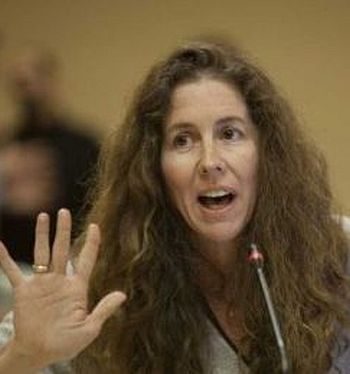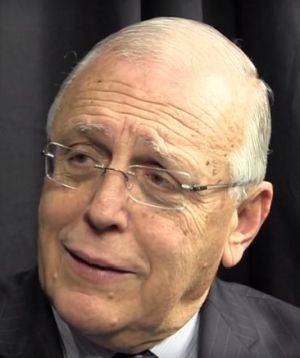The Winds Of War Swirl Around Off-Shore Turbines

Go fish: Commercial anglers from the Long Island region are not thrilled with the proliferation of offshore East Coast wind farms.
As a concept, ocean-based wind-energy harvesting is gaining momentum on Long Island – but don’t expect completely smooth sailing for the increasingly popular alternative-generation movement.
Although wind farms are rising around the globe and contributing ever-larger percentages of the electricity flowing through international energy grids, the “green” projects often face stiff opposition – ironically, from environmentalists, and often from commercial fishermen who say the ocean-based platforms disrupt natural breeding grounds and threaten their livelihoods.
Long Island anglers, for instance, are paying close attention to a class-action lawsuit against the U.S. Bureau of Ocean Energy Management, aimed at stopping wind-farm developments off the New York and New Jersey coasts.
Despite the rough seas, Stony Brook University’s Advanced Energy Research and Technology Center is jumping in with both feet. The AERTC is hooking the imminent launch of its Advanced
Energy Center Symposium Series – a collection of next-generation energy discussions
and workshops uniting industry experts, government officials and assorted stakeholders –
on a day-long May 5 event focused on offshore wind, slated to be held at the Montauk Yacht Club.
While offshore wind interests have made progress on Long Island – including LIPA’s January approval of what would (at least temporarily) be the nation’s largest offshore wind farm, to
be located 30 miles off Montauk by Rhode Island-based Deepwater Wind – the AERTC is clearly wading into disputed waters.
The May 5 conference is akin to Montauk being swallowed into “the belly of the beast,” according to Bonnie Brady, executive director of the Long Island Commercial Fishing Association, who said placing wind turbines in the middle of “traditional, historically productive fishing grounds” is a “recipe for disaster.”
Ocean-based wind-energy harvesting may produce modest electrical gains, but those turbines are “not a water-dependent use” – and “everything that’s important regarding fish and their habitat takes place under the waterline,” noted Brady, also a board member for the Center for Sustainable Fisheries.
“You can’t pile-drive and jet plow and drop concrete mats and juice (the water) with low-level electromagnetic frequencies … and in any way, shape or form call this a ‘green project,’” Brady told Innovate LI. “The only green is going to be the fleecing of ratepayers for something that doesn’t belong in the water in the first place.”
Robert Catell, chairman of the AERTC, disagreed with that assessment, noting offshore wind projects around the globe have been “very successful,” and in some regions have emerged as a main component of national energy strategies.
“Look at offshore wind all over the world,” Catell said. “And there’s really no evidence that it’s damaging to fishing industries.
“In fact, I’m told the fish like to gather around the platforms and spawn around the platforms.”

Brady suggested that spawning around manmade concrete posts and floating metal platforms was about as unnatural as it gets in a marine environment, and referenced Coxes Ledge – an oceanic point equidistant from Montauk, Cape Cod and Block Island, known for seasonal runs of cod and bluefin tuna – as Exhibit A.
Although some waters surrounding Coxes Ledge have been removed by federal regulators from wind-development lists, Broadwater Wind’s South Fork Wind Farm will still affect the rich spawning grounds, according to Brady.
“If you’re putting [turbines] somewhere with a name attached to it, that’s probably not a good thing,” she noted.
And it’s a blow not only to Long Island fishermen, but an interstate alliance of commercial anglers who “follow the fish,” Brady added – many of whom are getting chummy with that BOEM lawsuit brought by the Fisheries Survival Fund, an industry group safeguarding the Atlantic sea scallop industry (co-plaintiffs include the Garden State Seafood Association and a fleet of local groups, so far hailing exclusively from New Jersey).
“When [the South Fork Wind Farm] area was sited and the Massachusetts wind areas were sited, (fishermen in) New York, New Jersey and Connecticut had no input,” Brady said. “There are consequences wherever you site these things.”
And with wind farms in Long Island waters, she added, the consequences include “thousands of coastal jobs.”

“It’s unacceptable to literally stamp out jobs, which already exist, and that productive ecosystem for a future technology that’s not ready for prime time,” said Brady, who even challenged the science of ocean-based wind-energy harvesting by noting a lack of sufficient hydrogen cells or other storage technologies to make it all worthwhile.
“You can’t store it,” Brady said. “The farther away you go, the less you get back. That’s electricity 101.”
Such technological and environmental concerns are sure to be part of the May 5 symposium. But Catell – an energy-industry veteran who also chairs the New York Smart Grid Consortium and is perhaps best known as the former head of KeySpan and National Grid USA – remains convinced that wind energy is a vital component of the future, for both the nation and the AERTC.
Case in point: Denmark, where “50 percent of their energy” now comes from ocean-based wind turbines, according to the chairman.
“It shows that ocean wind energy can be compatible with fishing and other aquatic life,” Catell said.
